Limitation of the dorsiflexion of the foot, heel pain and pain on the posterior surface of the tibia may be caused by trigger points of the soleus muscle, which can be treated with simple exercises at home.

Soleus Anatomy and Function
The soleus muscle is a broad and flat muscle of the shin that lies behind the calf muscle.
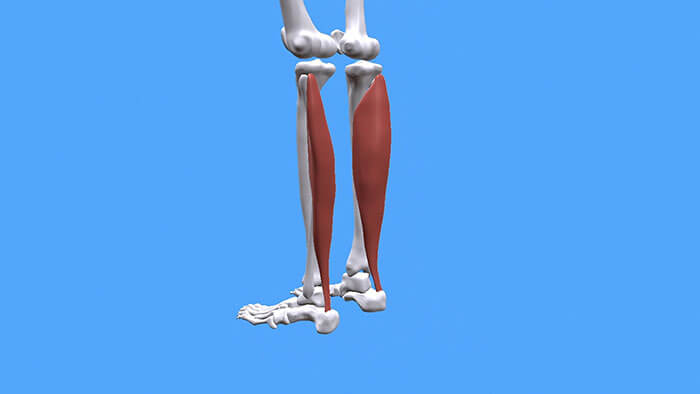
On top it is attached to the fibula and tibia, and on the bottom the soleus muscle tendon connects to the calf muscle tendon to form the Achilles tendon, which is attached to the calcaneal tuber.
The main function of the soleus muscle is the plantar flexion of the foot at the ankle joint.

The soleus muscle is involved in walking, cycling, running, and jumping. Because of its large venous sinuses, tight fascial sheaths, and large veins, the soleus muscle is a powerful muscle-venous pump during its work, which is called the “second heart.” The venous cavities deep within the muscle are compressed by strong muscular contractions and increase the outflow of venous blood from legs to heart.
Soleus Trigger Points Diagram
The most common the first trigger point in the lower part of the shin causes pain in the heel and Achilles tendon area.
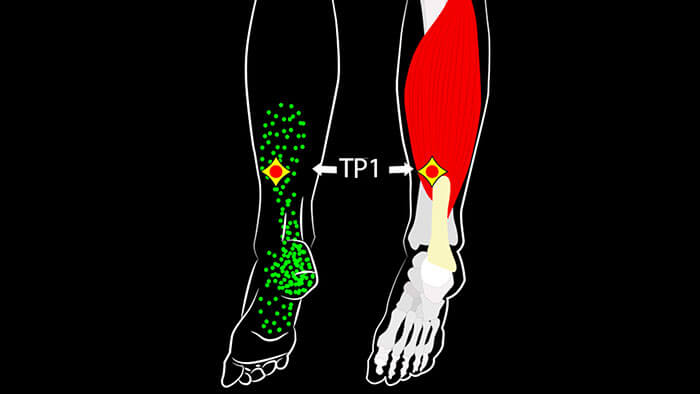
The less common the second trigger point causes pain in the upper part of the shin.
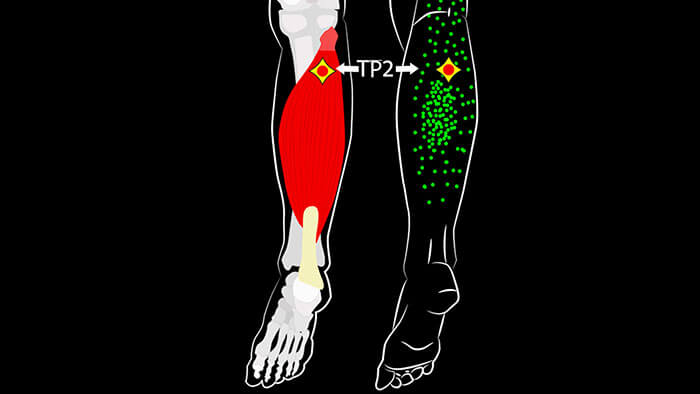
The most rare the third trigger point causes pain in the iliac sacral joint on the same side.
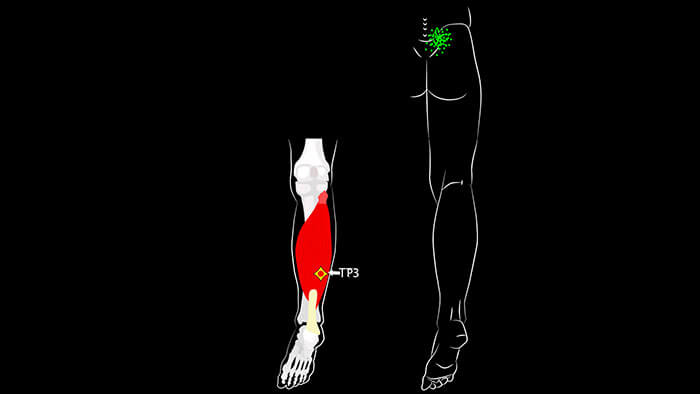
The pain can be so severe that it makes it difficult or impossible to walk, especially while climbing up a hill or stairs.
Trigger points in the soleus muscle limit dorsiflexion of the foot in the ankle joint and are a major cause of foot pain among fast-growing children.
Despite the fact that the soleus is the most fatigue-resistant muscle in the human body, continuous running, walking in high-heeled shoes, and long stay in a sitting position, when the muscle is in a shortened condition, provoke an aggravation of pain symptoms.
Testing of the Soleus Muscle
A normal person keeps their heels on the floor while squatting deeply.
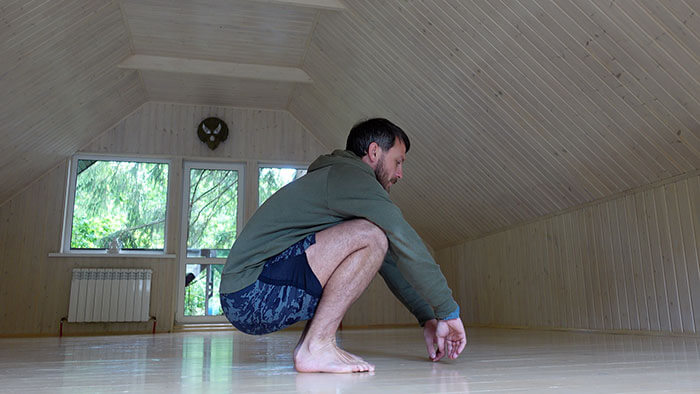
A sign of shortening of the soleus muscle would be either inability to squat or squatting with the heels off and the toes resting on the floor.
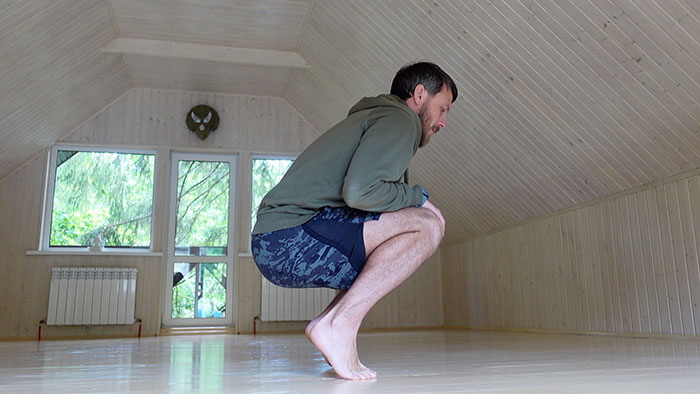
If the soleus and calf muscles are healthy, the person will be able to do at least 10 jumps on their toes without their heels touching the floor.
Soleus Muscle Release
The easiest way to get rid of this problem at home is to apply mechanical effect on the trigger point area, followed by stretching the muscle. Take a large massage roll, put it under the shin area and slowly roll the entire calf from the Achilles tendon upwards not reaching the popliteal fossa, and back.
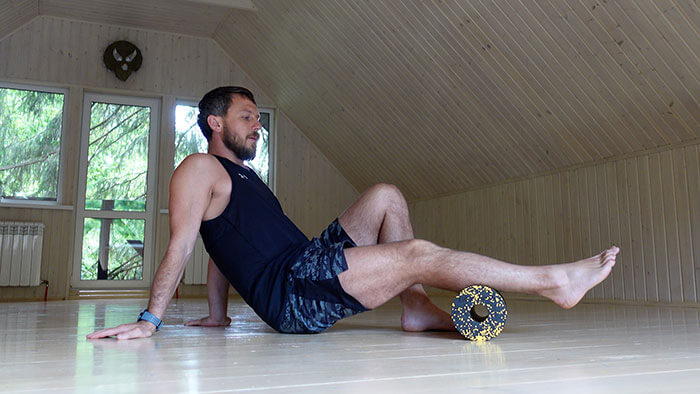
Keep rolling for several minutes, turning the foot in and out to massage all the muscle fibers of the calf and soleus muscles. If you sense an area of increased tension and soreness, hold on to it for 30-60 seconds. To increase the degree of mechanical impact on the muscle, you can take your supporting leg off the floor and place it on top. Repeat the exercise on the other leg. If you have varicose veins, I recommend being very careful when rolling the calf using a softer roll.
Soleus Muscle Stretching
After massaging your shin, you can do a simple exercise that will help stretch the soleus muscle and increase its mobility range. Pull the toes of your right foot toward you as much as possible and hold the position for a few seconds. Lower your toes and lift your right heel off the floor, contracting the soleus muscle for a few seconds.
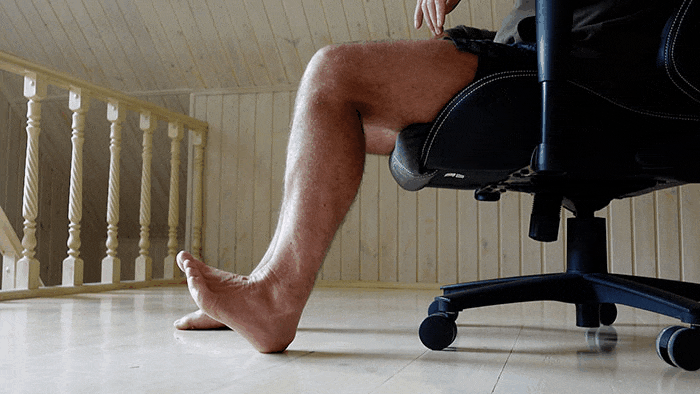
Relax the right foot by pressing the foot to the floor and repeat the exercise with the left foot. Do 3-5 more reps to each leg. This exercise can be done while sitting at a desk or driving a car for a long time.
For more intense stretching of the soleus muscle, you can use the exercises of the wellness program CHERENOK. Take a cherenok or a half-liter bottle of water in your right hand. As you breathe in through your nose, lift your right hand up and step your right foot back, resting on your toes.
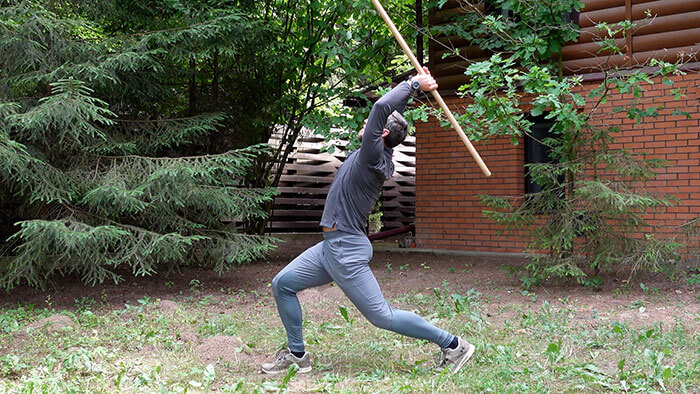
As you breathe out through your mouth, bring your foot and hand back to the starting position, pass the object behind your back into your left hand, and, as you breathe in through your nose, lift your left hand and step back with your left foot. As you exhale through your mouth, return to the starting position. Work alternately with your legs and gently increase the depth of step and the degree of muscle stretch.
Perform 4-8 dynamic cycles, then take your right leg back deeply, raise your arms above your head and fix the position for 30-60 seconds, keeping a deep breath through the nose. Step forward with your right foot, step back with your left foot, and repeat the static fixation the other way. If this position is too difficult for you, simplify the form and lean your hands on your front thigh.

You can also use the simple yoga exercises to stretch the soleus muscle. Stand on all fours, with your hands shoulder width apart and your feet hip-width apart, resting on your toes. Pull your knees off the floor and push your pelvis up. Keep your legs slightly bent at the knees, trying to press your ribs against your hips. As you exhale pull your heels to the floor, and as you inhale lift them up again, resting on your toes. Repeat the exercise 3-5 times, keeping deep and smooth breathing through the nose.

Try to put your heels lower with each exhalation and if possible touch the floor with them. After several dynamic repetitions, keep the final position for 30-60 seconds while breathing deeply through the nose.
To eliminate local discomfort in the lower leg, you can do all of the above exercises, but to achieve a full-body healing effect, I recommend regularly performing the following exercises.
I encourage you to watch the video about the calf muscle,

which lies above the soleus and can also cause pain in the lower leg, and in addition to that cause cramps .
Stay healthy, I wish you all the best, and thank you for subscribing to the channel!